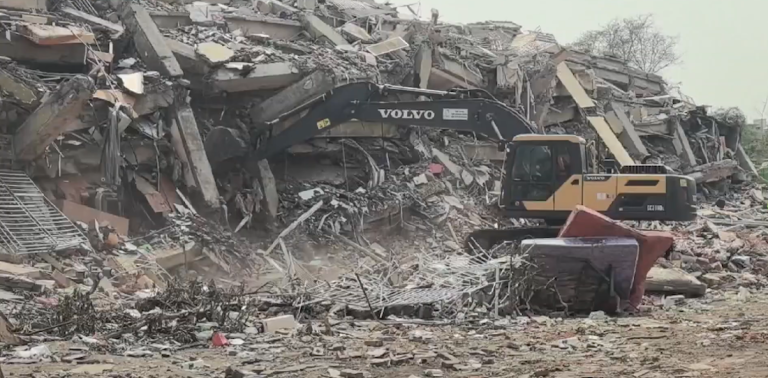
One Month Later: Myanmar’s Earthquake Survivors Face Daunting Recovery, NHK Reports
Mandalay — One month after a magnitude 7.7 earthquake devastated central Myanmar, survivors continue to face life-threatening shortages of food, medicine, and shelter. According to the country’s military junta, the disaster has claimed over 3,700 lives and damaged or destroyed approximately 60,000 homes. NHK World’s latest reporting reveals a dire humanitarian situation compounded by pre-existing political instability and infrastructure challenges.
Mandalay’s Makeshift Camps

In Myanmar’s second-largest city, displaced residents like a 64-year-old man interviewed by NHK World now live in tent shelters at public squares.
“I’m too terrified to sleep inside,” he explained, fearing aftershocks. His reliance on food donations underscores a critical gap in aid distribution, with no clear timeline for rebuilding.
The crisis has hit doubly hard for those already displaced by conflict. A 27-year-old man who fled fighting in Kachin State six months ago lost his wife and toddler son in the quake. “Others have suffered more,” he told NHK, expressing determination to collaborate on community recovery efforts.
Sagaing’s Infrastructure Collapse
The northwestern Sagaing Region, nearest the epicenter, remains without electricity or running water in multiple districts. Local hospitals, described by aid workers as “barely functional,” struggle to treat injuries and prevent disease outbreaks. Debris from flattened homes litters the landscape, with reconstruction efforts yet to begin due to logistical challenges and limited government support.
Humanitarian Response Challenges
International aid organizations report severe difficulties in delivering supplies to affected areas. Road damage, political restrictions, and ongoing clashes between military forces and pro-democracy groups have hampered relief operations. The UN’s Office for the Coordination of Humanitarian Affairs estimates over 200,000 people require immediate assistance.
Long-Term Implications
Experts warn that without sustained intervention, Myanmar risks a prolonged displacement crisis. “This disaster has layered onto existing vulnerabilities from years of political unrest,” noted Dr. Khin Mar Aung, a Yangon-based disaster response analyst. The junta’s limited capacity to coordinate recovery has drawn criticism from global NGOs.
Survivors interviewed by NHK emphasized the urgent need for building materials and medical supplies. “We don’t need promises – we need corrugated metal and antibiotics,” said a community leader in Sagaing’s capital, Monywa.
Aid Shortages Persist in Myanmar One Month Post-Earthquake (May 2, 2025)